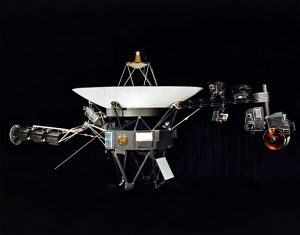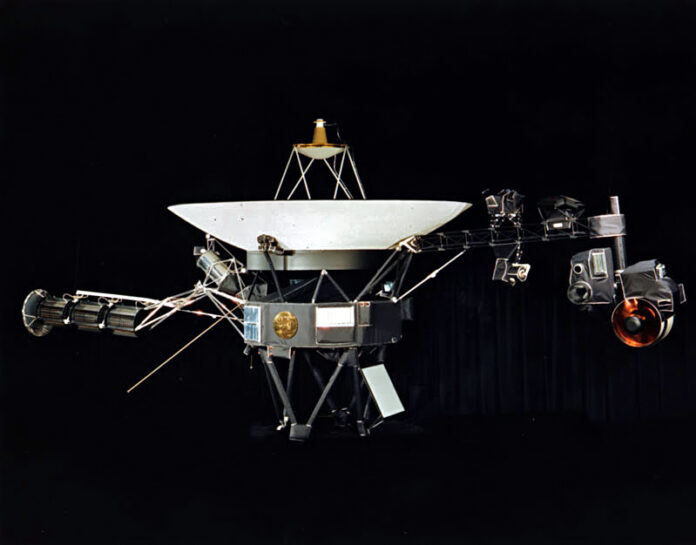BY HANNES THUM

When people see the Earth with their own eyes, from a distance—and only a select few of us have done this—it is, apparently, a perspective-shattering experience: the so-called “overview effect.”
Alan Shepard, the first American to see the Earth from space, would say, “If somebody’d said before the flight, ‘Are you going to get carried away looking at the Earth from the Moon?’ I would have to say, ‘No, no way.’ But yet, when I first looked back at the Earth, standing on the Moon, I cried.”
In the 1970s, NASA sent two unmanned probes out into space: Voyager 1 and Voyager 2. Where the previous decade’s Apollo program had built and launched vehicles that would safely take humans into outer space and then deliver them safely home, the Voyager program built two probes that were to leave Earth and head out into the farther reaches of space and never to return.
It’s a fascinating thing to ponder: these craft will never return to Earth.
Flying at some 15 to 20 kilometers a second, they still continue on, the first man-made objects to ever leave the solar system. We still are in communication with them, but that will one day end. Their fate is somewhat unknown after that. What a long and lonely journey.
An interesting thing happened with Voyager 1, as it was pushing farther and farther out. In 1990, at the request of (among other people) the legendary astrophysicist Carl Sagan, NASA went through quite a degree of trouble and cost to do something that they hadn’t initially planned on doing. They had Voyager 1’s cameras turn back around in the direction of home and snap a few photos. A little bit like a selfie.
The resulting image of Earth is a single blue pixel in an ocean of black pixels. Look it up sometime—the famous “pale blue dot photo.”
Sagan, who had spent a career understanding just how miniscule the Earth is compared to the vast expanses of outer space, would later write, “Each of us is a tiny being, permitted to ride on the outermost skin of one of the smaller planets for a few dozen trips around the local star.”
A stunning thing to consider.
Science, at times, can collide with a seemingly disparate field of study: philosophy. Science likes to act like it’s a stoic, fact-based, and data-driven process, like it’s unaffected by the human foibles of emotion. But, when science gets into some of the deepest reaches of the universe (or into some of the deepest questions of human curiosity), that barrier of detachment breaks down a little bit. Philosophy, usually associated with the questions about what our life means and how we fit into the universe, after all, literally means “love of wisdom.”
The overview effect draws some of the world’s most successful and dedicated scientists outside of their comfort zone, into the realm of a more nebulous line of thought.
Often, the end result of science is something very unscientific—a shift in perspective.
Hannes Thum is a Wood River Valley native and has spent most of his life exploring what our local ecosystems have to offer. He currently teaches science at Sun Valley Community School.



